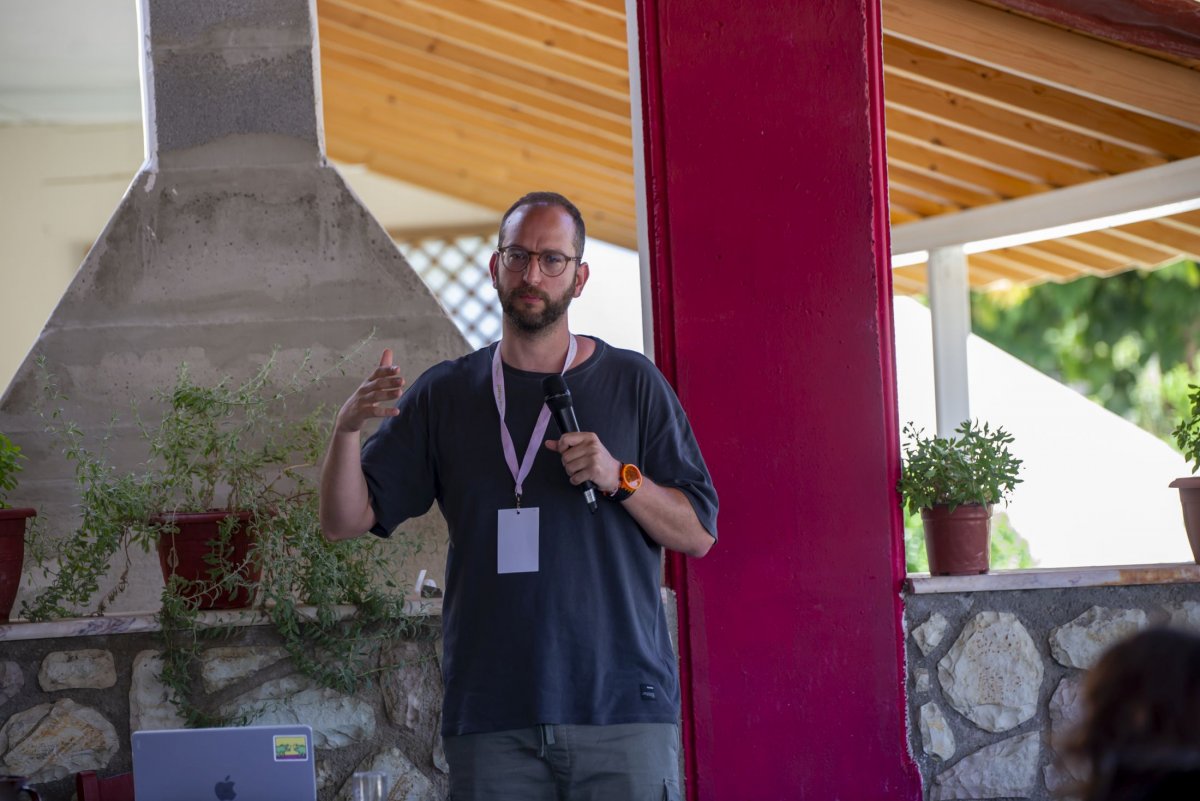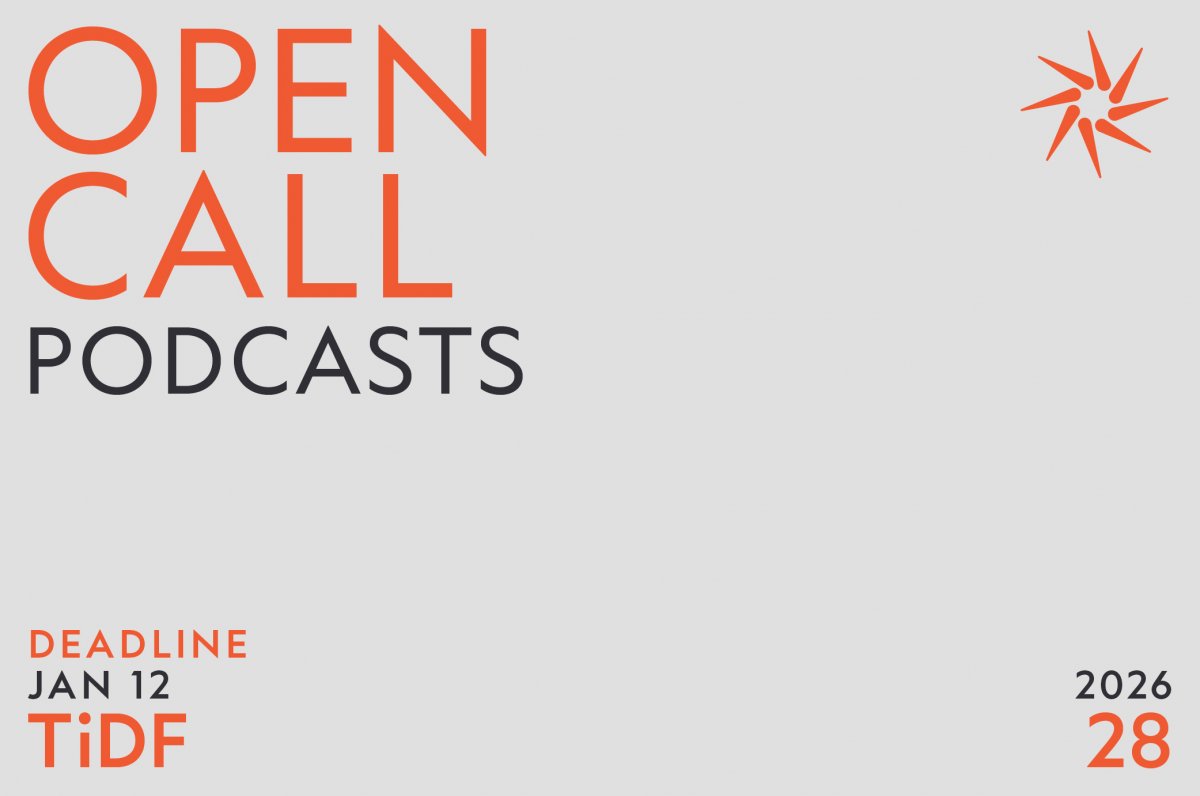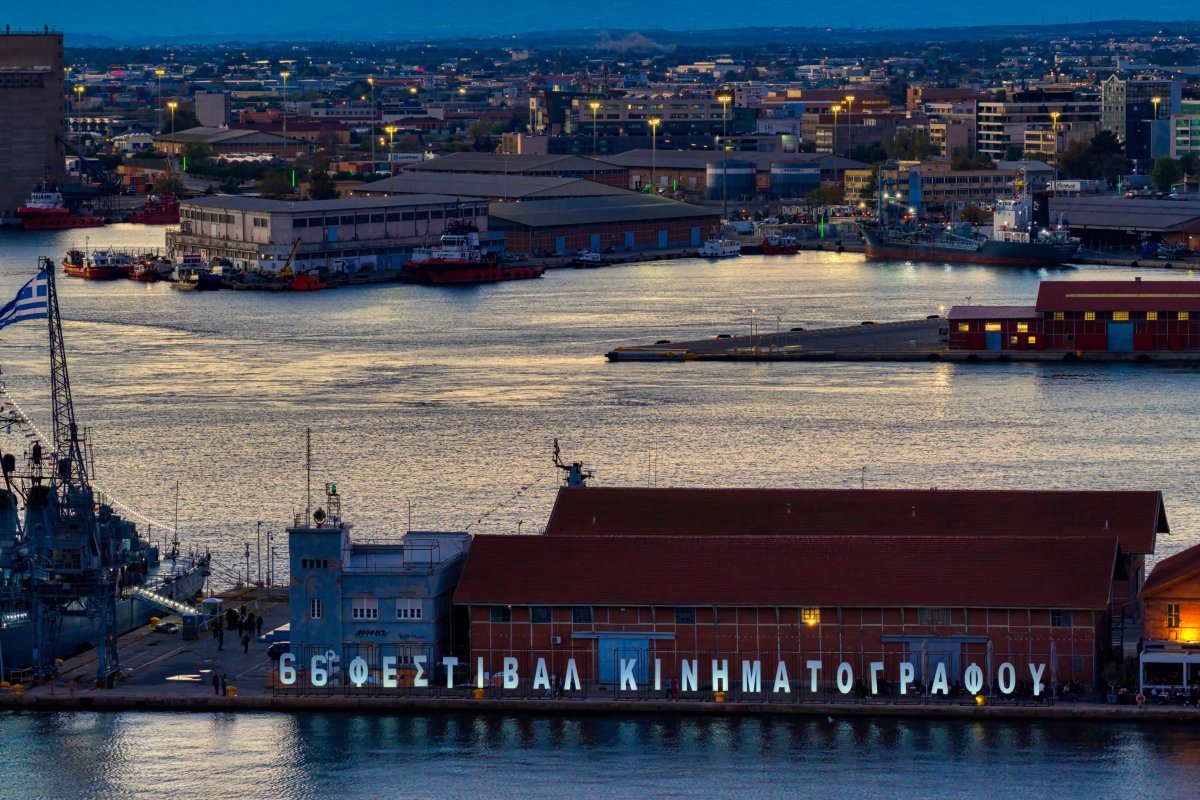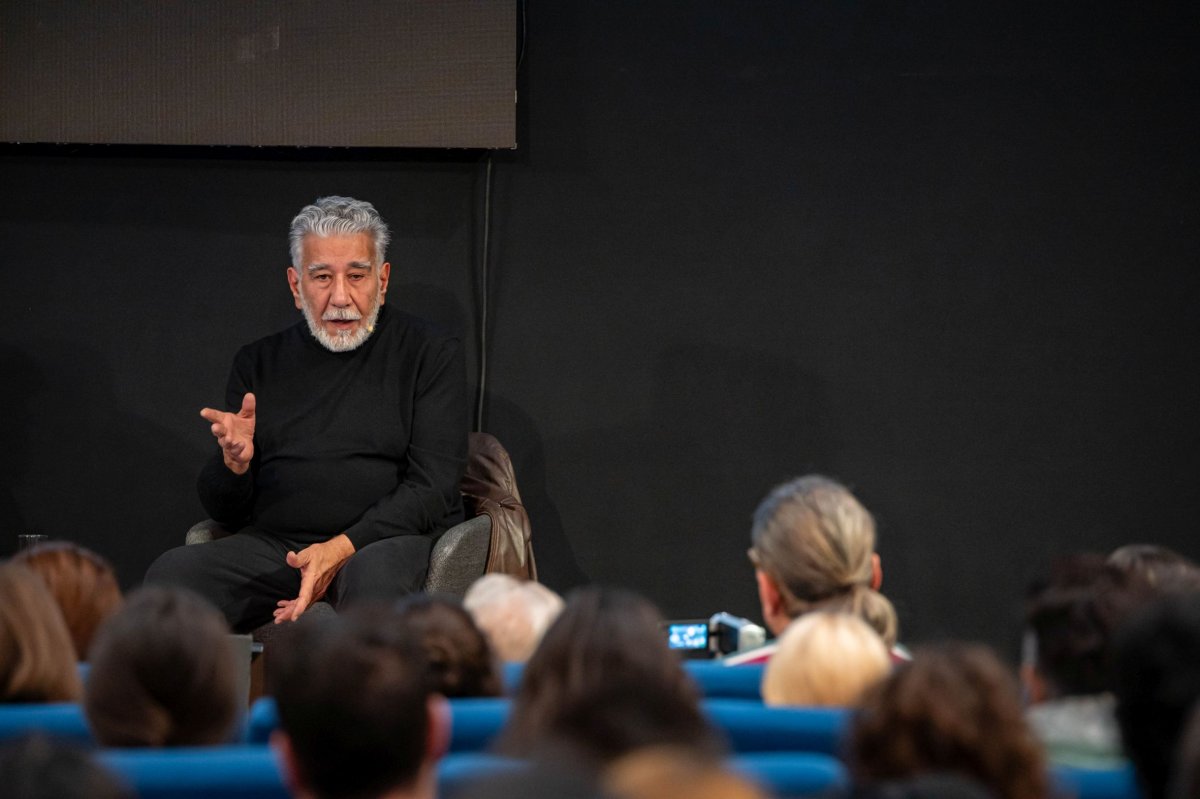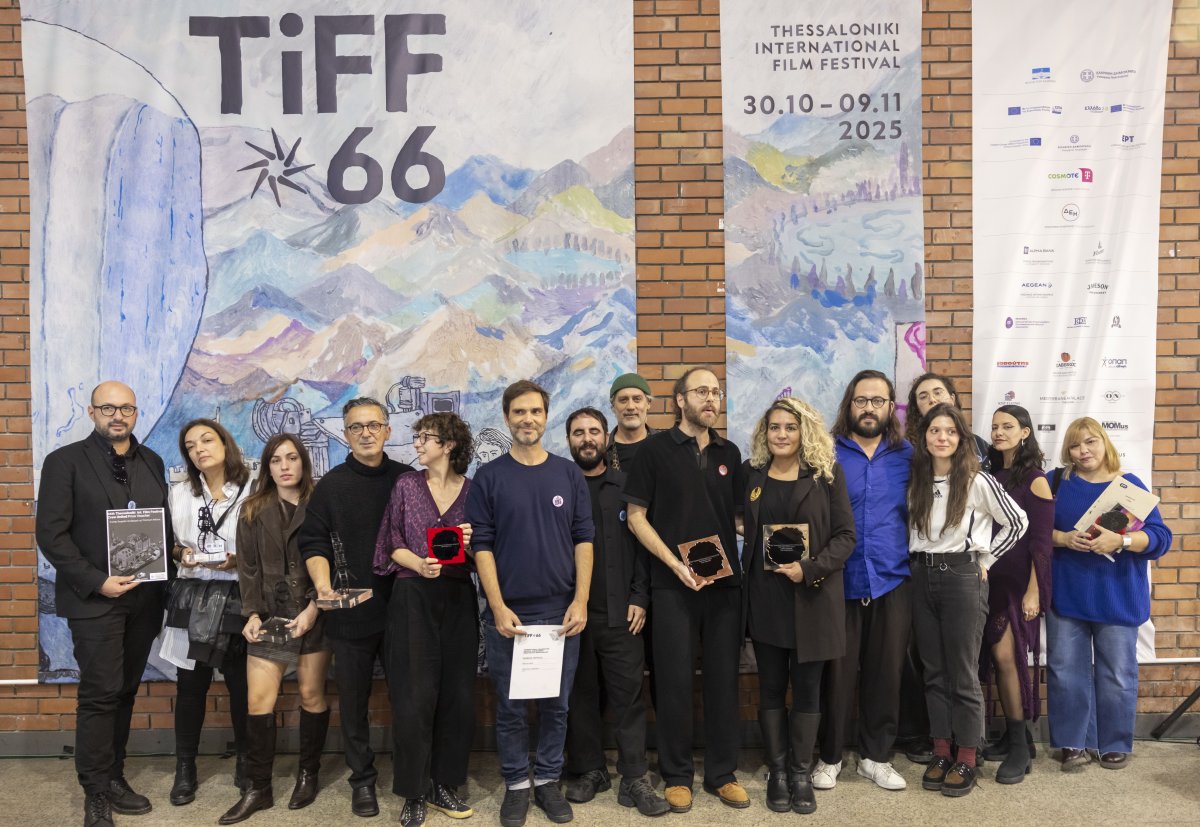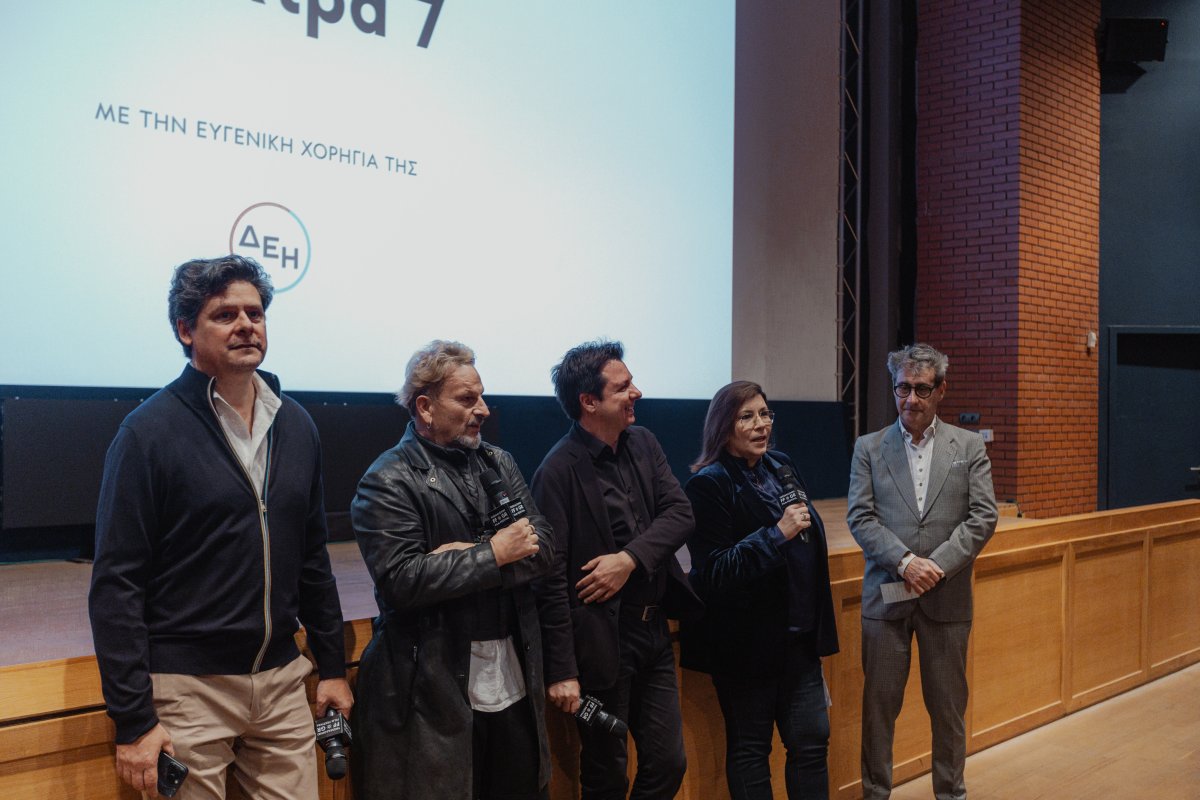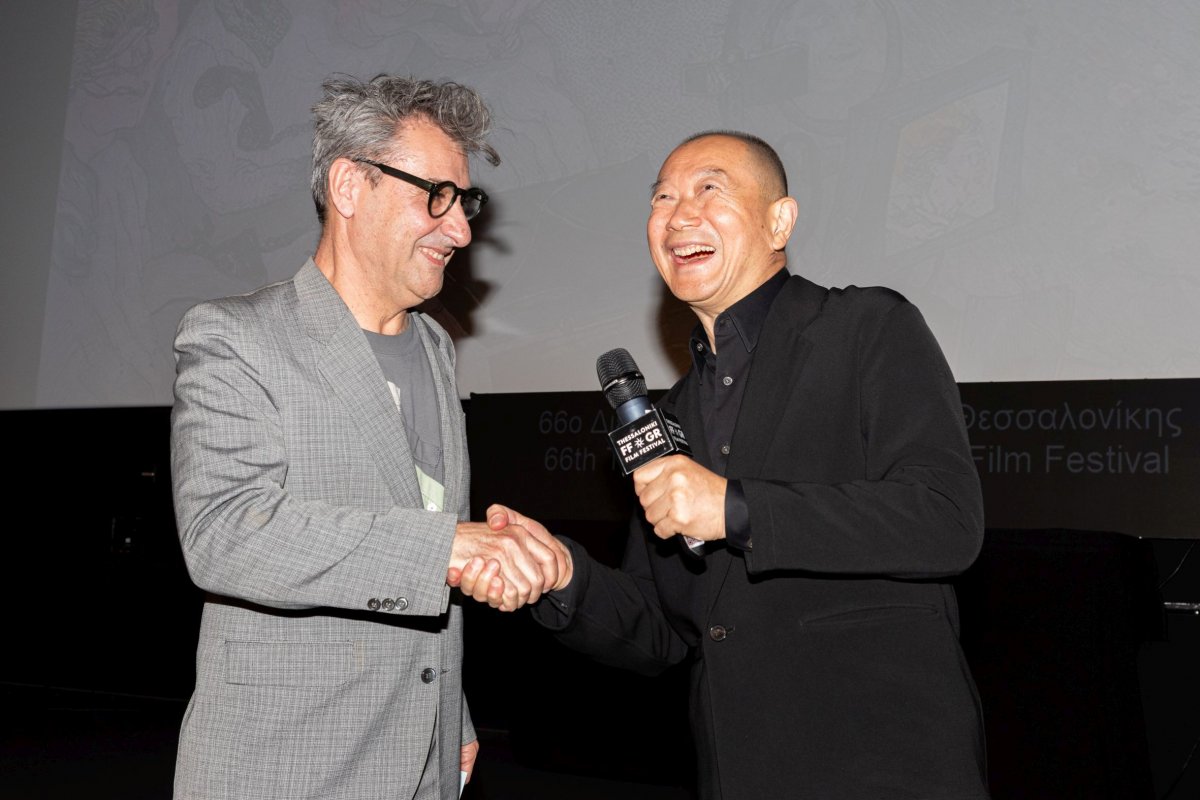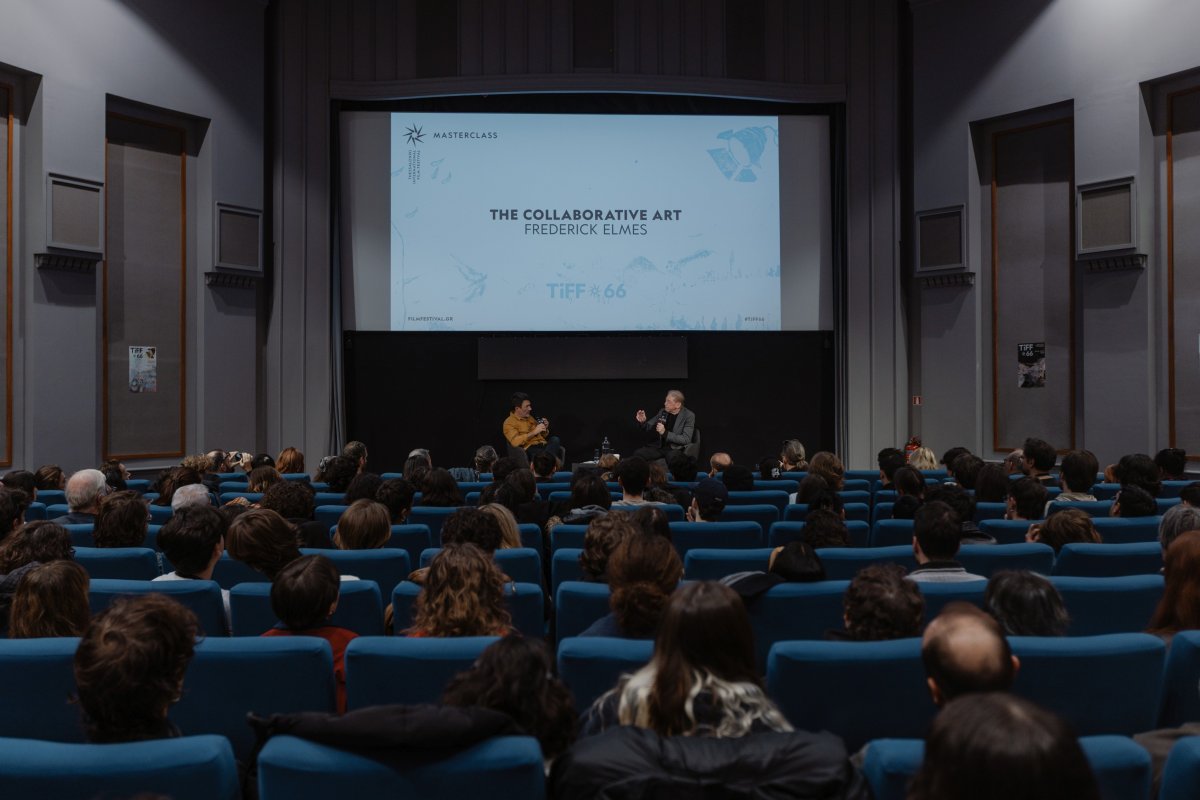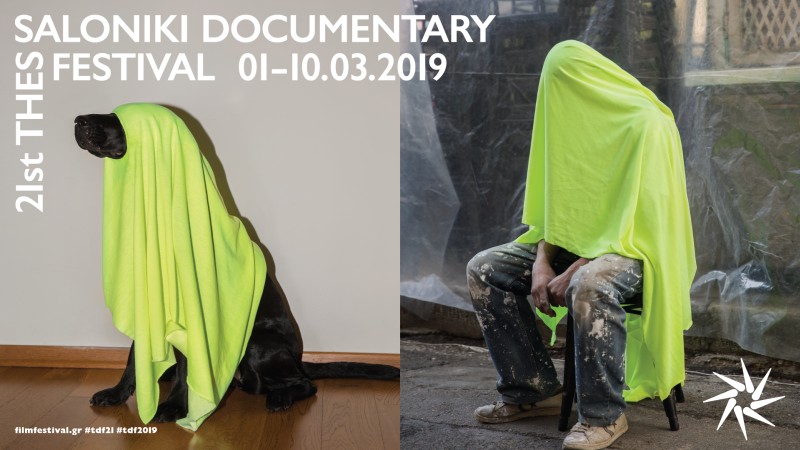On Saturday 6th, July, filmmaker and animator Fokion Xenos offered a presentation on the mixed-media techniques and the combination of analog and digital registers in the world of animation in Agia Anna. Delving into his multi awarded graduation short, titled Heatwave, the creator talked about the process of discovering new animation techniques, narrating his personal journey from the role of the VFX artist and digital designer all the way to becoming a stop-motion filmmaker.
The presentation included Fokion Xenos’ personal journey from his time as a student and the beginnings of his career as an animation artist to the completion of his extremely successful film, Heatwave, which he unveiled to the audience. Prior to this, it had been screened the previous day within the framework of the 3rd Evia Film Project, at Ciné Apollon in Loutra Edipsou.
After the screening, he explained that the film took him and his team almost a year to complete. Then, he said his first contact with the simplest form of animation, 2D, happened during a university course back in 2011, which he didn't like at all, because the professor forced them to use paper and pen. Years later, he realized that this process, although time-consuming and strenuous, is quite productive.
After researching the field, he turned to the field of motion graphics, which allowed him to integrate into the job market in advertising and post production. However, as he stated, he was not satisfied at all: "I caught myself putting limits and making my projects following tutorials on the internet. I was meeting my professional obligations, but putting in almost no creative effort. The outcomes were similar to those I encountered on the internet. This was not a software issue – I am a big technology enthusiast. The PC and software are merely tools. It is how you utilize these tools; you must extend the process to the point you are satisfied with it, without falling into the trap of automation,” he stated.
He also stressed that for him, it was essential to find the time to be off screen. Having personal and creative time is a necessity. For Fokion Xenos, the time he spends doing things with his hands is as important. This need constituted the beginning of his contact with stop motion, his greatest love.
This career change occurred when he started creating his own material: “In 2014, I started combining physical items with digital products and thus, I slowly found my style. I wanted to be more curious about what other people were doing and avoid becoming complacent. I wanted to experiment with different mixed media techniques. I noticed that a lot of the films I liked originated from the same university, NFTS in the UK, and because of that, in 2016, I applied and got in. The film you just watched, Heatwave, is my thesis.”
Prefacing his multi-awarded film, he mentioned that he was thinking of the Greek summer when he was making it and he aspired for it to be colorful and happy. He used a specific kind of clay that emulated human skin, as well as one that creates a special effect when it comes into contact with light: "Because summer is rhythmic and repetitive in nature, the film also has loops and repetition," he explained.
When referring to how challenging and chaotic animation is for someone who doesn’t know exactly what they are doing: “Of course, it’s okay not to know what you are doing, since you know you're at least researching it. Trying a lot of things at the beginning of the creative process is very useful for me; testing, rejecting, experimenting."
Three animation techniques were used in the film: cut out, claymation & replacement animation. The third is a technique somewhat obsolete, used for the very first time almost a 100 years earlier. Fokion Xenos likes to update old techniques and bring them into the present: "The film’s background was prefabricated, while the entirety of it is a construct between 2D and 3D. Two of my assistants created approximately 800 clay figures in two weeks for the needs of the film. Nearing the end of the process, they desperately told me they were seeing them in their sleep," he remarked, humorously.
The set was two meters long, made with very simple materials. Fokion Xenos preferred to dedicate his time on the construction of many characters rather than on the intricacy of the construction. The film was extremely successful, winning over 40 awards. It premiered at Annecy, the world's biggest animation festival, traveling all over the globe.
"To comprehend something, no one follows a linear process. You have to test, evaluate, destroy and rebuild. If you're trying something new, you must accept it's going to be terrible the first time. That's part of the process. A little play and a little experimentation are a necessity. Don't beat yourself up and don't take it personally. Life has enough drama already, that doesn't need to carry over to your work," he advised the students.
He added that he really likes the idea of "the mistake being greater than Art", because everything is born from mistakes, they are of the highest importance in the creative process. He mentioned a number of times that he always approaches his profession with a playful mindset. From his decision to pursue graphic design to his next steps and career change, he has always despised the executive process dominating purely commercial work: "I do a lot of things I don't like, jobs that are more content than art. However, all the technical skills I needed to do what one might call art, I acquired by doing trivial and commercial work.
He concluded by saying that the creative process is usually a collage of experiences rather than a sudden flash of inspiration and that what we call “artistic style” is probably the result of dedicating countless hours on a specific job.


